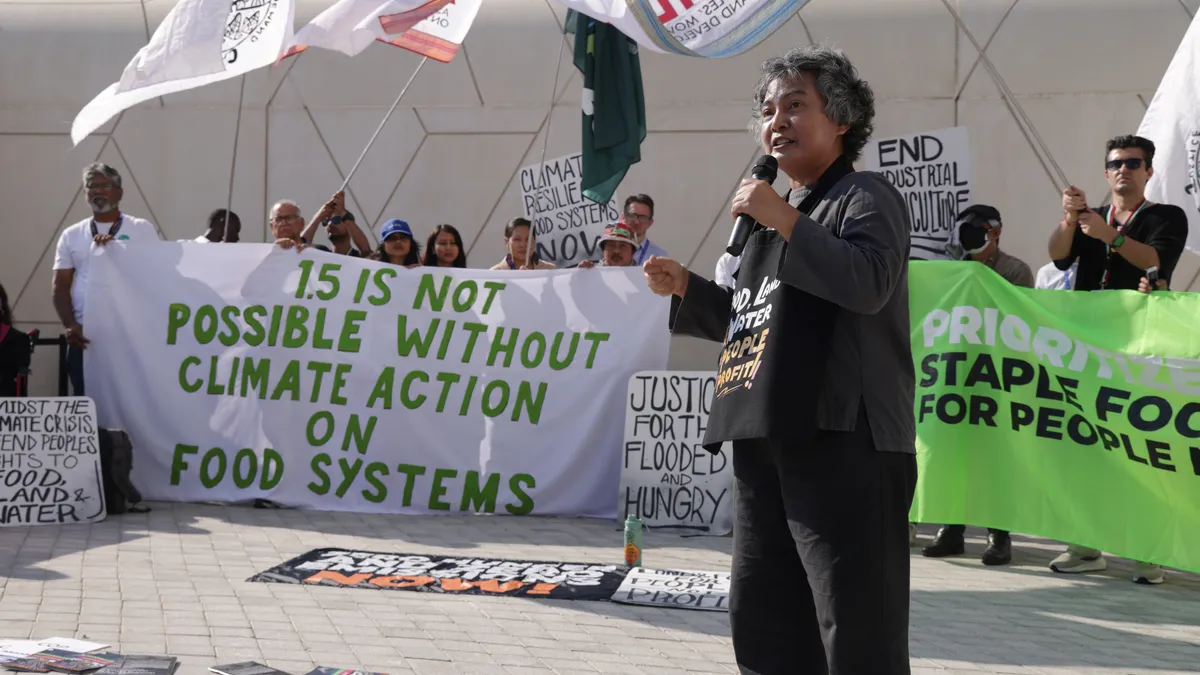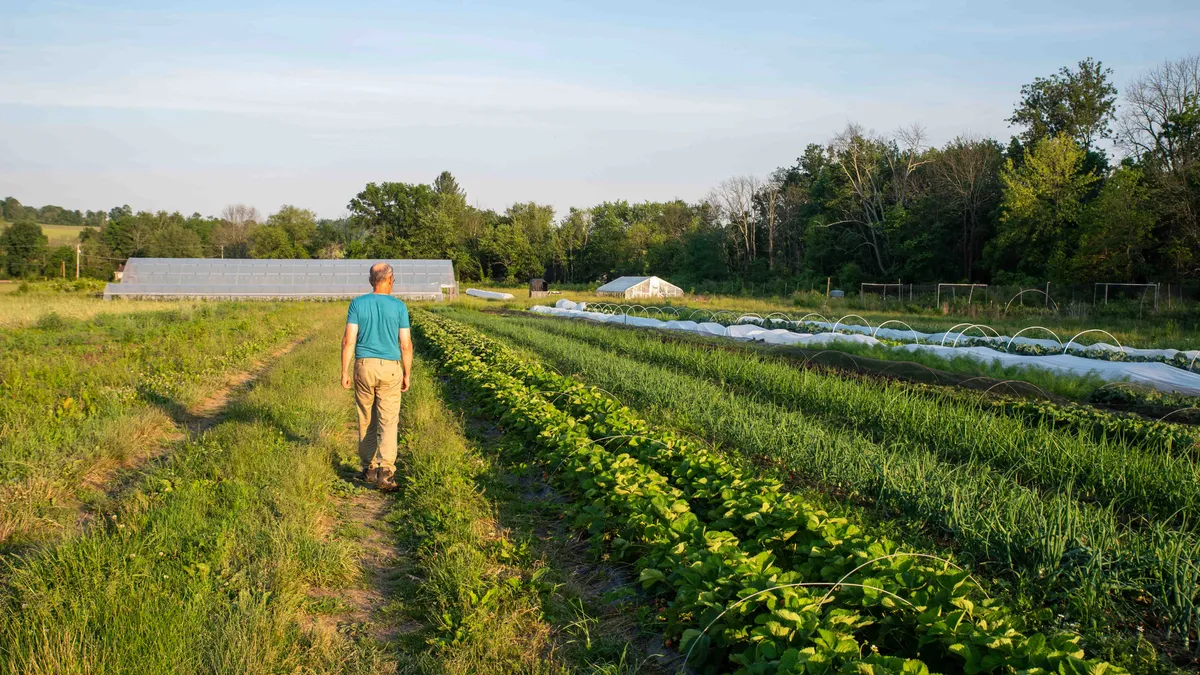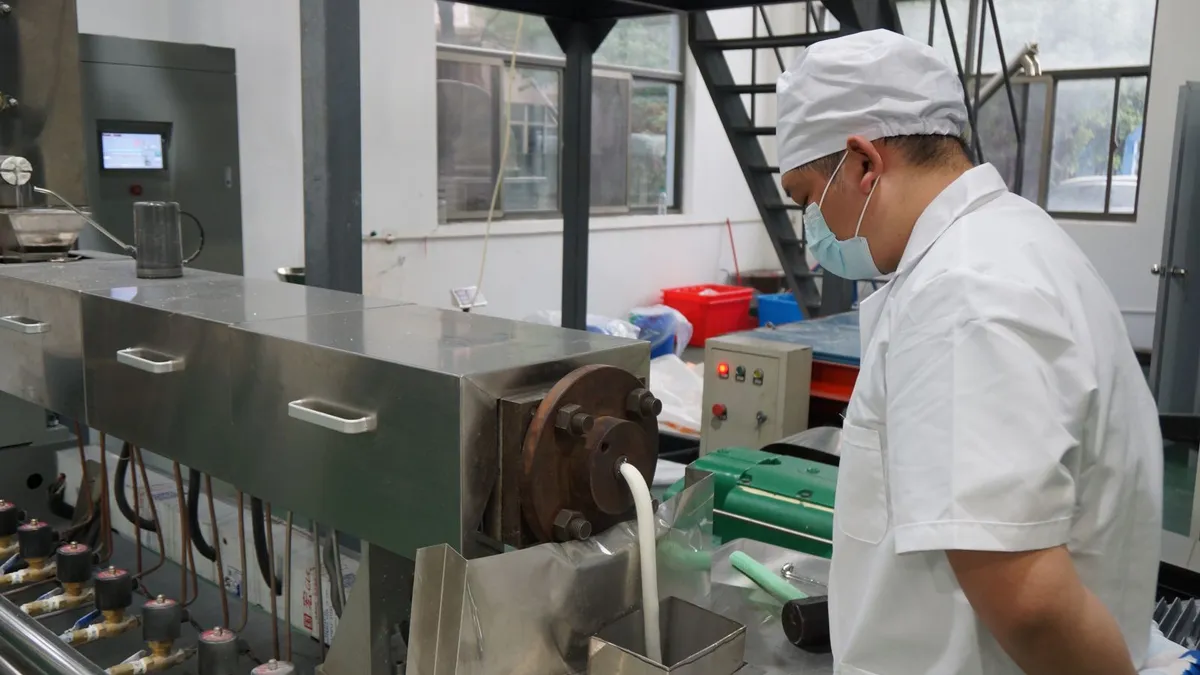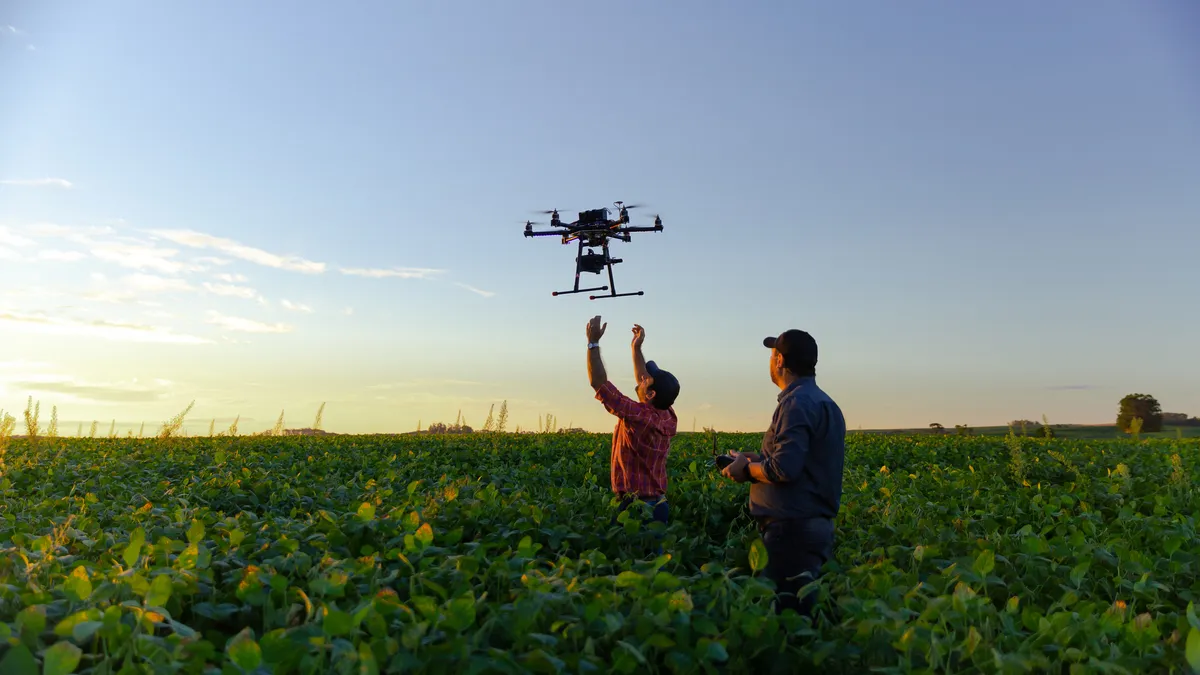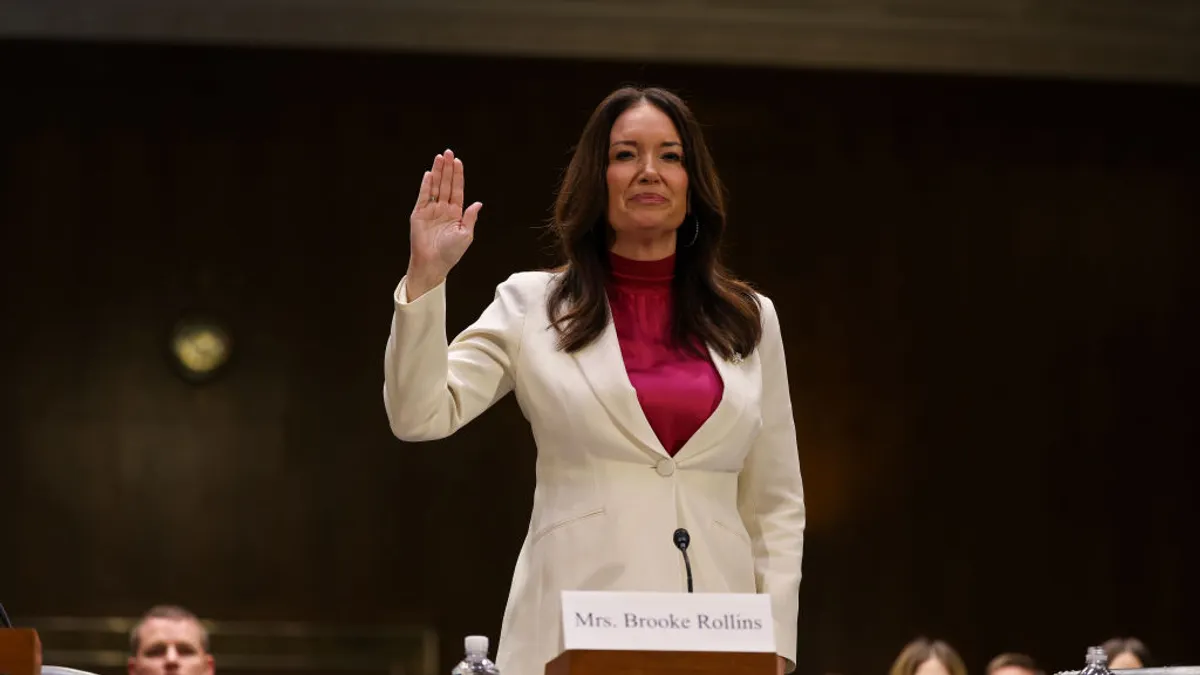Transforming agriculture production practices, curbing food waste and reducing consumption of animal-based products in high-income economies are at the center of a United Nations plan to bring the agrifood sector in line with the Paris climate agreement.
The U.N. Food and Agriculture Organization on Sunday released its first-ever roadmap for global food systems to adapt to climate change and keep global temperatures from soaring above 1.5 degrees celsius. The plan, which outlines 120 actions across 10 priority areas, aims to turn agriculture from a net emitter to a carbon sink over the next three decades.
"The agrifood system has the potential to actively contribute to global mitigation efforts, but substantial endeavors are essential in adaptation to achieve increased productivity with reduced resource consumption," the report said.
-
2025Emissions from drained carbon soils are cut by 5% compared to 2020.
-
2030Gross GHG emissions of agrifood systems cut by 25 percent.
-
2035Agrifood systems are CO2 neutral, only other GHG are net emitters.
-
2040N2O emissions of the agrifood systems are halved compared to 2020.
-
2045CH4 emissions of the agrifood systems are halved compared to 2020.
-
2050Agrifood systems are a net carbon-sink (-1.5 Gt CO2eq per year).
The release of the report marks the start of a three-year process for countries to draft climate action plans for food systems. The FAO will release a second version of the roadmap next year, with countries' plans to be finalized at COP30 in Brazil.
Here's a breakdown of some of the major goals and proposals from the FAO's net-zero roadmap:
Livestock and nutrition
To meet the needs of the Paris climate agreement, some richer nations, the report says, will have to cut back on meat consumption. Livestock is responsible for up to 26% of agrifood system emissions.
"Excessive consumption of food products with high GHG footprints in some locations contribute unnecessary to emissions of agrifood systems," the report said, calling for large-scale diet changes that take environmental considerations into account.
Although the U.N. calls for reduced meat consumption in some cases, the organization still noted that animal-based products are an important source of "high-quality protein." As a result, the livestock industry should match herd populations to fit countries' nutritional needs and respond to "environmental opportunities and constraints," the report said.
By 2030, the U.N. wants countries to reduce livestock emissions 25% compared to 2020. Beyond decreasing herd levels, the organization called on the livestock industry to rethink feed practices, improve grazing management practices and boost productivity through better breeding.
"Ambitious and innovative programmes and wide-ranging interventions have the potential to bend the emissions curve while production grows,” FAO Deputy Director-General Maria Helena Semedo said in a statement.
Crops and soil health
To curb rising temperatures, farmers are encouraged to reduce their chemical usage and find new practices that can scale production without harming the environment. Improved crop breeding and wholesale changes to fertilizer application could yield major reductions in emissions.
Fertilizer and crop protection products like pesticides have allowed the agriculture industry to grow more food on less land. However, these chemicals require an energy-intensive manufacturing process and are also responsible for the degradation of biodiversity.
The U.N. called out the need to improve soil's ability to capture carbon through the implementation of regenerative farming practices. In addition to acting as a carbon sink, healthy soil can support biodiversity and reduce the need for pesticides.
To meet goals around crop and soil health, the U.N. is pushing for an additional 10 gigatons of carbon to be captured through cropland and pasture soil between 2025 and 2050.
Food loss and waste
Waste occurs at every step of the food production cycle from harvest to plate, and addressing food loss could make a huge dent in countries' plans to lower emissions.
In 2021, about 13.2% of food was lost sometime between harvest and before arriving at the grocery store. At the consumer level, an estimated 17% of all food was wasted in 2019.
Addressing waste will require a revamp of global food supply chains, plus new changes in consumer behavior. The report calls to protect food through improved technologies and enhanced storage facilities, in addition to encouraging consumers to rethink their portion sizes.
The U.N. is pushing to reduce per-capita food waste by 50% at the retail and consumer levels by 2030. By 2050, all food loss and waste should be integrated in "a circular bioeconomy and used for feed, soil enhancement or bioenergy production."
Energy use
Agriculture stands to become a major player in the global shift to renewable energy, with the U.N. calling for more investment in biofuels, biogas and other types of alternatives.
Around 30% of agriculture's total emissions can be tied to energy consumption, including transportation and processing. The U.N. calls on producers to not only change their energy use, but to also take more steps to improve production of bioenergies.
By 2050, the U.N. aims for carbon capture from bioenergy to reach 1,263 metric tons of carbon dioxide per year.
Biogas and biofuels, which can be made from agricultural waste products, have remained a controversial solution among environmental groups who have argued that these solutions can worsen climate change. The U.N. noted that countries need to adopt robust legislation to prevent potential "side-effects of bioenergy growth."



